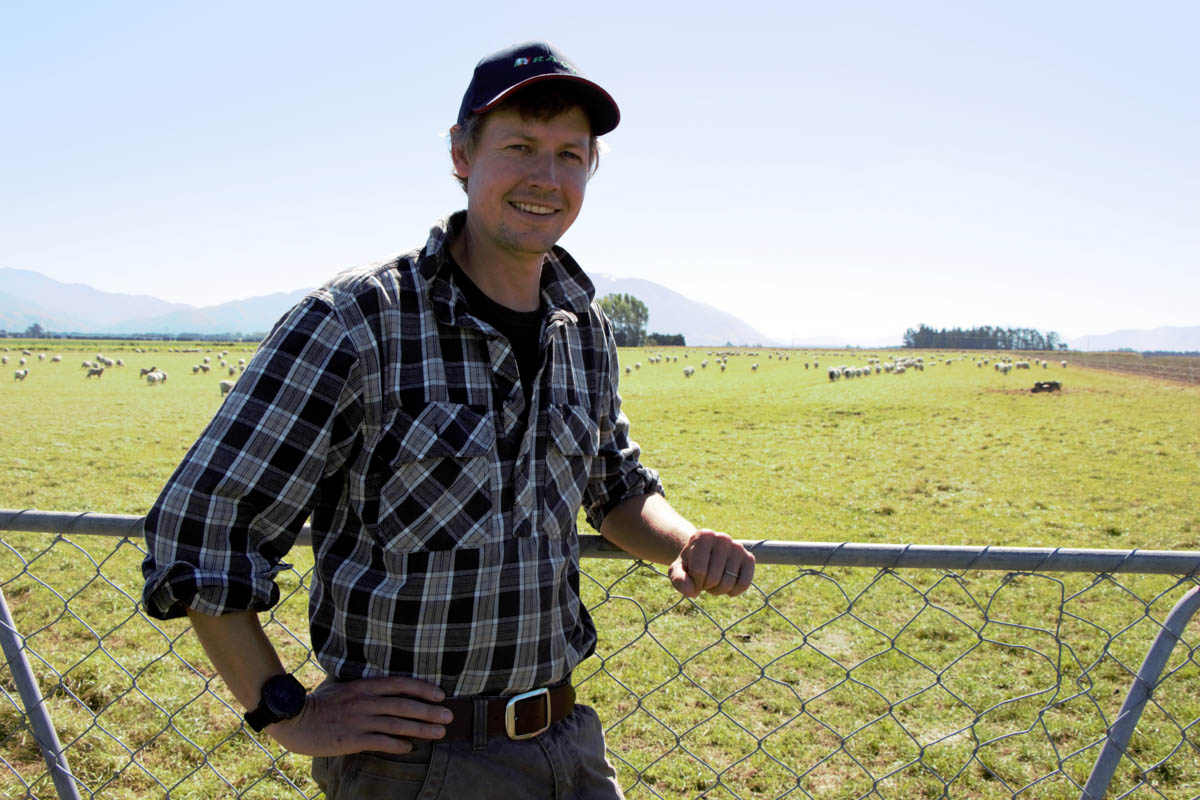Graham Butcher and Matthew Tayler
Beef + Lamb Innovation project at Matthew and Shona Tayler’s Lorne Peak Station is nearing its completion amidst the turmoil of lockdown. Some planned activities have been delayed by restrictions. The project is coming to its conclusion, but the pathways to improving profitability as a result of the project have only just begun.
To recap, we started out the project with the objective to finish own-bred beef calves as R2s on high performance pastures (notably lucerne) and avoid a second winter which is what was happening. We aimed to get carcaseweight (CW) as R2s close to what was being achieved as R3s. A big call really.
All this was to happen in the Garston environment which can indeed be challenging.
Year one began with utilising all the known tools to manage bloat. In an ideal world, these probably work but risks like broken ballcocks diluting bloat oil, cold overnight snaps and limited staff on the large scale at Lorne Peak produced unacceptable deaths in high-value animals. Other tools would be needed.
Important note here, we felt we had to come up with a safe plan without Rumensin capsules. It’s an antibiotic and possibly can’t be used in the future.
Companion varieties, with lucerne, and different ones sown pure had been part prominent in discussions. Were we making life too difficult by pursuing pure stands of lucerne? There is good production with pure stands, but it is not much use if they kill. What counts is kilograms of beef, not drymatter and there’s an animal welfare issue as well.
Of interest have been the use of Lotus corniculatus (birdsfoot trefoil, sown in strips, mixed and pure), plantain, and red clover and grass varieties. Use of these at initial sowing and stitching in or the last couple of years of a stand’s life is being considered. Sub clover is also now part of what grows at Lorne Peak.
A visit to the Avery family’s Bonavaree farm, Marlborough, introduced the idea of utilising high performance pastures with bulls and visits this year to two very good bull beef units at Tarras seems to have cemented a bull beef policy into place.
In this third year of the project Matthew has made several important points about what is happening now on station.
This year 680, 100-day bull calves were on station in November. Possibly too many given conditions we have now.
These calves went on to red/white clover till mid-January when the transition to lucerne began. Bloatenz/Peta dispensers began five days prior to lucerne. Single mob. Heavy rain led to puddles in paddocks and calves not drinking from troughs. They were taken off to grass for five days and then quickly transitioned back to lucerne. Flax seed oil manually dosed into troughs was used successfully in year two to counter bloat. A venturi pump which has not yet been installed will administer evenly to troughs.
The plan was to leave them on lucerne to end April, but again events overtook the plan. There were still 8000 lambs on board to go as 20kg lambs. The lambs took priority on lucerne so the bulls were taken off. However, out of 680 calves, only one was lost to bloat.
Corniculatus was sown just prior to Christmas and has gone well. Calves did not appear to show any preference over lucerne. Beef cows and calves used to follow and clean up fathen seemed to graze the lotus quite hard compared to lucerne. The lotus recovery was slow but so was lucerne. This is one of the drier paddocks on Lorne Peak. Corniculatus has a similar growth pattern with lucerne and winter weed sprays are possible. Lotus has high condensed tannin not only for bloat control but also more efficient nitrogen metabolism and suppression of internal
parasites. All important issues.
The prairie grass/lucerne mix has established well and the tetraploid rye stitched in for past two years was productive in mining nitrogen.
The station now has 150ha of sub clover which is growing well.
Until this year the most bulls killed was 40. This year to date, 330 R3 were killed at 315kg, 20 R3 at 300kg with another 60 ready to go now and 180 R2 will be ready in May (partly processor delays). This leaves 90 bulls to kill as R3 after winter. We will need to wait until we see how many lambs and R1 bulls we will need to winter before topping up on R2 bulls.
The next step is to give R2 bulls and station-bred steers another go on lucerne, but given the balance of the farm there’s no immediate need to take the additional risk. A drier farm without irrigation or oversown, top-dressed hill would have more incentive to do so.
So, from a well-defined objective at the start, the actual path has been somewhat different. At the start, stock management options were the focus. Now, pasture, including lucerne, management is as important with companion varieties in our sights.
LESSONS LEARNED
- Need more lucerne mixes, essentially treating lucerne as the equivalent of white clover.
- Don’t be hard on R2 in winter, compensatory growth good but kill timing more important.
- Next pivot will be a 108ha techno system.
- Mob size matters with R2 and older, not so much with R1.
- Buy early healthy bull calves.
- Bulls as profitable as winter dairy cows and have led to better sheep and beef cow performance.
- Higher cattle ratios have led to higher legume content in pasture, particularly on over-sown, top dressed hill country.
- Confident that R1 bulls are safe on lucerne (through grazing management and Peta’s) and profitable without North Island drought.
• Graham Butcher is a Gore-based farm consultant.




